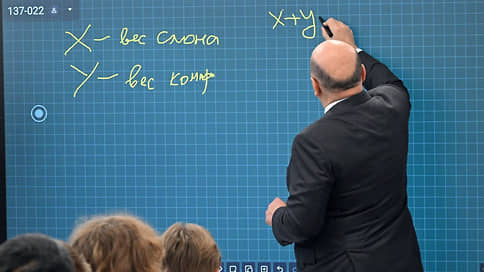The government discussed training for industry
[ad_1]

The greatest shortage of personnel in the Russian Federation now exists in mechanical engineering, the chemical sector, construction and transport, Prime Minister Mikhail Mishustin said on Tuesday during a strategic session on labor education. To meet the growing demand of employers for qualified manufacturing personnel, the government plans to expand practice-oriented training formats and link enrollment targets in universities and colleges to the real needs of companies, calculated five years in advance.
Prime Minister Mikhail Mishustin on Tuesday held a strategic session on developing the education system for the labor market. Noting that after foreign companies left the Russian market, domestic enterprises began to occupy the vacated niches, the prime minister recalled the task facing the authorities to achieve significant growth in the manufacturing industries. To do this, they must be provided with qualified specialists, and, according to Mikhail Mishustin, the entire system of professional training should be concentrated on this.
The Prime Minister said that now the highest demand for workers is in mechanical engineering, the chemical industry, construction and transport. In addition, in the next few years, the need for personnel will increase in the science, healthcare and information technology sectors.
It should be noted that the personnel problem is partially being solved within the framework of the federal project “Priority”, which provides for the creation of educational and production clusters, which represent the integration of colleges and enterprises in the real sector. Since September 2022, such educational institutions, together with employers, have been training personnel for priority sectors of the economy. According to the data provided by the prime minister, the volume of private investments in educational programs and in updating the material and technical base has reached 3.5 billion rubles. “By the end of 2024, colleges under this program will graduate 150 thousand competent craftsmen ready to go to work,” noted Mikhail Mishustin. As Kommersant previously reported, within the framework of the “Professionality” program, at least 85% of graduates are expected to be employed (see “Kommersant” dated May 30).
In addition to transforming educational programs, the government intends to change the approach to determining the target numbers for admission to colleges and universities, starting to calculate them based on the requests of companies. To do this, it is necessary to begin to formulate a personnel forecast for the needs of the economy for the five years ahead (the corresponding instruction was given by the President following the results of the State Council in September; see Kommersant of September 22). Note, however, that although the practice of such forecasts exists in many countries, they rarely come true completely due to the inability to accurately predict the path of technology development. In addition, it may not be possible to bring together all the data on the Russian labor market, especially when it comes to assessing the size of the informal sector and the migrant labor market.
In these conditions, another tool for supporting the labor market can help – retraining programs, the use of which allows you to flexibly respond to the demands of the labor market. Now state retraining programs exist within the framework of the national project “Demography” and annually cover several tens of thousands of people. But employers themselves do this – as the Higher School of Business of the National Research University Higher School of Economics calculated, they spend up to 1.8% of the wage fund on their own corporate universities. However, such costs can be called low in comparison with other countries.
[ad_2]
Source link






